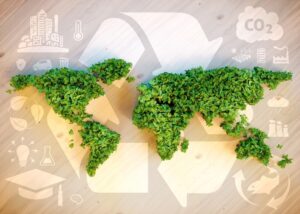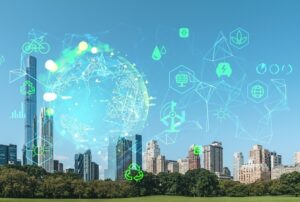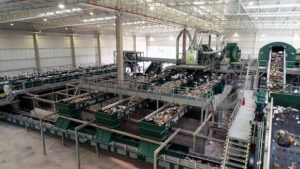THE HISTORY OF RECYCLING
As long as human civilization has existed, garbage has existed as well. Previously, as nomads, it stayed by the wayside. With the domestication of animals and plants, and the development of static civilizations, conglomerates of people formed in the cities. Thus, the issue of garbage, which has never been a problem, now became one.
In the Middle Ages, the concern with sanitary and health issues led to the creation of the first garbage collection initiatives. Between the 18th and 19th centuries, with the Industrial Revolution and World War II, there was a considerable increase in the amount of waste, and also a change in the type of waste generated, according to a classification. This has complicated the types of discarded materials, previously composed basically of organic material, but, now, with the inclusion of materials from industrial processes, such as electronics, chemicals and radioactive materials, for example. Garbage production has increased along with the evolution of humanity.
WHAT IS “RECYCLING”?
According to the National Solid Waste Policy (“PNRS”), “recycling” is the transformation of solid waste through processes that involve changes in its physical, physical-chemical or biological properties. This process aims at transforming the waste that would be discarded into raw material or new products.
It is quite common to confuse recycling processes with reuse and reduction processes, although they are different stages of the Waste disposal process. Recycling is transforming the initial material by changing its composition. “Reuse” means adapting the material for another use without transforming it. “Reducing” is the initial stage of the process, aiming at reducing the volume of waste generated.
HOW DOES RECYCLING WORK?
To be recycled, the waste is separated according to its composition, since each type has a specific recycling process. The better it is separated and less contaminated and dirty – hence the importance of removing excess waste and organic waste from recyclables before disposing them – the higher is the quality of the waste, and the more efficient its recycling will be. It is very important that this separation is carried out at the source of the waste, since, after leaving the homes, offices or industries, it will go through several transportation processes until reaching the recycling belt.
The best way to separate the types of waste is basically into 3 parts:
- Rejects: These are materials that cannot be recycled and, therefore, need to be sent to landfills for environmentally correct disposal, such as, bathroom waste, cigarette butts, adhesive materials etc.;
- Organic recyclables: Food remains and leftovers, peels and seeds of fruits, vegetables and greens, wood shavings, pruning remains, and other materials that can be turned into fertilizers through processes such as composting;
- Dry recyclables: plastics (separated according to their composition), paper and cardboard, metals, aluminum, glass and all other materials than can be subject to recycling processes.
The next step after separation at source is the collection of the material, properly separated and sanitized. The waste goes through selective collection, and then to sorting centers, being separated according to the type of waste and forwarded to its respective recycling destinations.
In addition to selective collection (public or private initiative, removing the separated waste at the source), it is possible to forward recyclable waste to Voluntary Delivery Points (“PEV”) or “ecopoints.”
Another way to separate recyclable waste is through Mechanized Screening Plants (“UTM”). This technology allows for qualified separation, greatly reducing time. The UTM enables the environmental agents to act only after the first mechanized separation stage.
OTHER MATERIALS WITH SPECIFIC RECYCLING PROCESSES
The complexity of the products we use results in specificities on the disposal of some materials. This is why their correct segregation at the generating site is fundamental and important to enhance the recycling process. See below:
- Electronic Waste can have its components reused or recycled, by separating the parts of interest;
- Debris can be recycled by crushing the material in machines and reusing it in road paving, for example. For this residue, it is important that the iron be separated from other debris, so that the crushing process can be carried out;
- Styrofoam. Despite being 100% recyclable, only 34% of the styrofoam produced in Brazil is recycled. It can be separated along with dry recyclables;
- Fluorescent lamps can be recycled, but the chemicals present in them have a high potential for contamination, hence the importance of disposing them of at voluntary delivery points (“PEV”);
- Cells and batteries also have a high potential for contamination, and must be sent to PEVs. They can be transformed into pigments for fireworks, ceramic floors, glass, paints and others;
- Cooking oil can also be sent to PEVs, but this residue can be turned into soap through a simple process that can be done at home, or sent to specific initiatives that carry out this process.
RECYCLING WORLDWIDE AND IN BRAZIL
The availability of resources, organization, structuring of public policies, and cultural, makes worldwide recycling much higher than in Brazil. According to PUC-RIO, Germany recycles 56.1% of its waste, Austria 53.8%, and South Korea 53.7%, and processes have been in place for longer than here.
According to the same study, in Brazil, the first recycling programs appeared about 30 years ago. The country is a world leader in aluminum recycling, with 87.2% being reused. Regarding paper, we recycle 52.3% of what is produced.
In 2010, the National Solid Waste Policy (“PNRS”) was implemented, being the first specific regulation regarding the integrated management of solid waste, considering reduction, reuse and recycling as a starting point.
According to the 2021 Overview of Solid Waste in Brazil, currently, the country still does not collect 7.8% of the waste generated, and collection is carried out in a diffuse manner among the regions. Thus, only the Southeast, South and Midwest regions have already achieved collection rates higher than the national average (92.8%). The North and Northeast regions still do not collect about 20% of the waste, reaching an average collection of approximately 80%.
RECYCLING CREDITS
With the dissemination of practices more aligned with the environmental context and the appreciation of ESG (Environment, Social and Governance) practices around the world, the responsibility for the complete cycle of waste (from generation to disposal) has gained strength, opening up space for mechanisms such as the Recycling Credit. With this mechanism, the private sector’s role is to make reverse logistics feasible, which means that, if the waste is produced, sold and consumed, it must be collected.
WHY RECYCLING
Event when it is considered recyclable, this does not mean that waste will actually enter the recycling chain. For this to happen, there is a need for engagement of the population and to the separation process at home and at the companies. The private sector must comply with the PNRS. Aspects such as the demand of the recycling sector for the material, market value, ease of storage and processing of the material are among other factors.
The consumption of energy, water and the emission of greenhouse gases in the process make the need for reduction imminent, both for citizens at home (becoming aware of correctly disposing of their generated waste) and for the adoption of more sustainable policies at the companies considering aspects of the circular economy and that may improve the responsibility with waste management, fulfilling the responsibilities set forth in the PNRS.
In addition to the environmental benefits that the implementation of recycling processes brings, the social issue linked to workers in the waste sector in Brazil is quite delicate. Many environmental agents (or collectors) work under dangerous conditions, without minimal infrastructure and often living in conditions considered below the poverty line.
The social responsibility of companies comes from the commitment to engage and incorporate these workers, offering better working and living conditions to them.
Finally, recycling reduces the withdrawal of raw materials from nature that would be used to make new products; collaborates with cleanliness and public health; and even generates jobs. The responsibility for its implementation is collective.
Visit Orizon’s Mechanized Sorting Units. Contact us if you have any questions.



